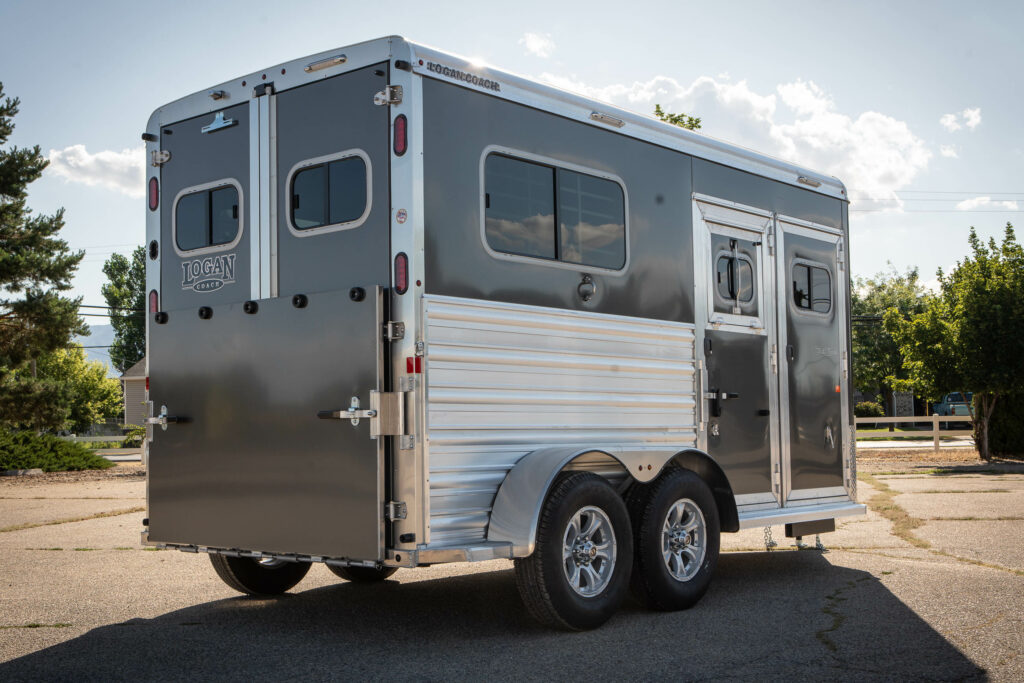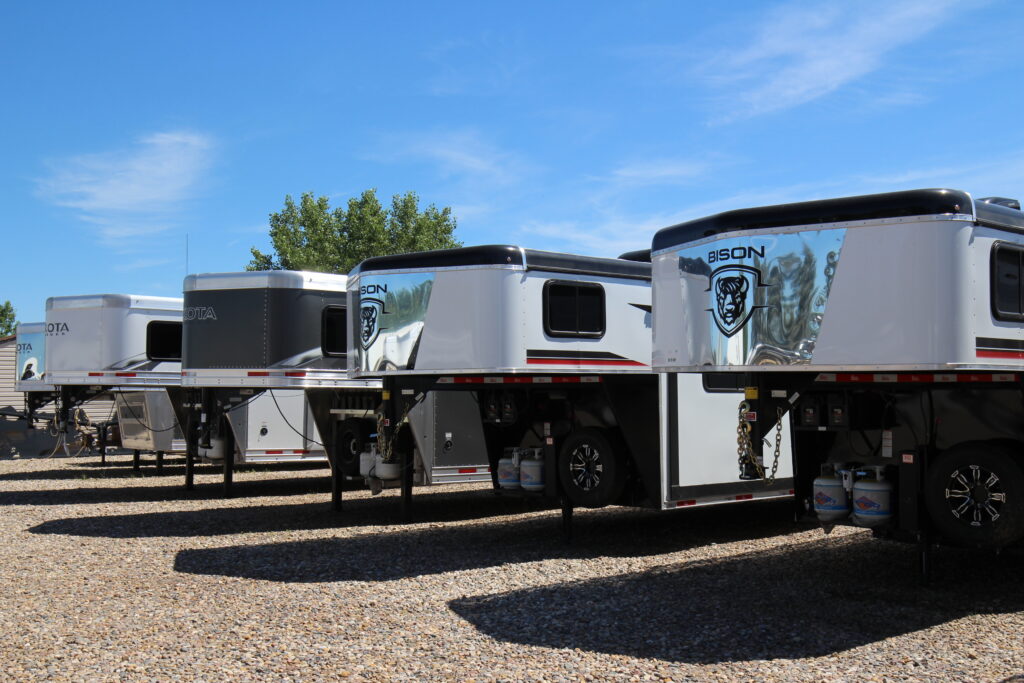Safety and comfort are the top hauling priorities among horse owners. While you’re on the road, you want the peace of mind that both you your precious cargo are safe. When choosing your next horse trailer, few considerations will affect your hauling experience more than the choice between a bumper pull and a gooseneck. However, unless you already have a clear preference between the two, it can be difficult to know which would be best for you and your horses.
In this article, we’ll outline the major differences between the two hitch styles, as well as their unique advantages and disadvantages, so that you can make an informed decision on your next purchase.

Bumper Pulls
Advantages
Bumper pull trailers have a number of advantages. The first is size. Bumper pulls are on average considerably smaller and more lightweight than goosenecks, which translates into lower costs. Because of this, bumper pulls can often be hauled by vehicles with a lower GVWR (Gross Vehicle Weight Rating), such as smaller pick-up trucks and SUVs.
A bumper pull can also be less challenging to haul for inexperienced or first-time haulers. Since bumper pulls have a normal turn radius, meaning that the trailer follows the towing vehicle though turns, they are more predicable to haul than goosenecks and unlikely to cause any damage to your truck due to too tight a turn (discussed further below).
Disadvantages
Despite their many advantages, bumper pulls come with their own disadvantages as well. The size of bumper pull trailers is limited by the towing capacity of a rear mounted receiver hitch, which is installed on the rear frame of a truck or SUV. As a result, bumper pull dressing rooms or living quarters cannot be built as spaciously as those of goosenecks. They are also limited in the number of horses or livestock they can safely haul.
Additionally, bumper pulls may be prone to swaying and have less stability on the road than goosenecks, which can make for a rougher hauling experience, especially if roads are icy or driving conditions are windy.

Goosenecks
Advantages
Gooseneck trailers offer a unique set of advantages and disadvantages which differentiate them from bumper pulls. The primary advantages of a gooseneck over a bumper pull include stability and size. Because a gooseneck hitch places the tongue weight of the trailer over the truck’s rear axle, rather than the rear frame, gooseneck trailers provide a more stable hauling experience, are less prone to swaying, and are less likely to be affected by inclement driving conditions. This also allows goosenecks to be built considerably larger, with spacious living quarters and horse areas capable of accommodating 4 or more horses.
Although bumper pulls are better suited to inexperienced drivers, the tighter turn radius of gooseneck trailers means that they are more maneuverable and capable of tight turns. This can be an important factor if you are forced to haul into and out of tight spaces with your trailer. However, maneuverability comes with certain risks as well. Turning a gooseneck too tightly can result in a smashed truck window, a torn-off fender, or damage to other buildings or vehicles nearby. Being familiar and confident with your hauling set-up and your own level of skill is important when hauling a large gooseneck trailer.
Finally, goosenecks can also be easier to hook up on your own since you can easily see the hitch and trailer through your rearview window.
Disadvantages
Despite their many benefits, gooseneck trailers also have a few downsides. The first is the gooseneck hitching system, which must be specially installed in the bed of your pickup truck (no SUV’s here!) and is far more expensive than a rear receiver hitch. A high capacity gooseneck towing kit can cost you between $800 to $3000.
Gooseneck trailers, because of their larger size and living quarters, are also more expensive than bumper pulls. This coupled with the need to purchase a truck capable of towing your trailer can make for a costly adventure.
As mentioned above, goosenecks are more technical to drive than bumper pulls, which means they are less well-suited to inexperienced or new drivers. The gooseneck hitch also means the loss of truck bed storage space, so you will have to plan to store your tack and supplies inside your trailer instead.
Which trailer is right for me?
As you consider whether a bumper pull or a gooseneck trailer is right for you, it is important to consider your unique needs. How many horses do you plan to haul? Are you looking for a living quarters or just a dressing room? What is your current hauling/hitch setup? As you answer this questions, you will develop a clearer idea of which trailer will provide both you and your horses with the best hauling experience.
Still not sure? Try our quiz to find out now!
